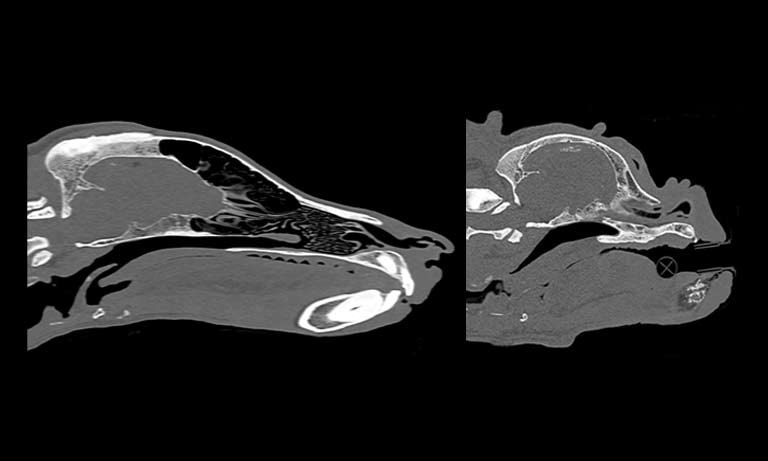Brachycephalic dogs
What's the issue?
Brachycephalic (flat-faced) breeds, such as Pugs, Bulldogs, and French Bulldogs, have become increasingly popular in recent years. However, many owners aren't aware that the 'cute' way they look can cause serious and often life-limiting health problems and compromise their welfare.
Brachycephaly refers to a short skull shape, which gives the appearance of a flattened face. It can affect dogs, cats, rabbits, and other species. Health and welfare problems associated with brachycephaly include:
- Anatomical defects of the upper airway causing breathing difficulties often associated with overheating, sleep apnoea, and regurgitation, eg Brachycephalic Obstructive Airway Syndrome (BOAS)
- Eye disease
- Inability to mate or give birth naturally (requiring Caesarean section)
- Repeated skin infections
- Dental problems
Dogs that are affected may require regular visits to the vet and corrective surgery.
Vets tell us that the majority of people who own brachycephalic dogs aren't able to recognise their pet's breed-related health issues.

What's our view?
The rapid rise in the number of brachycephalic dogs in the UK is leading to a population-based increase of ill health and compromised welfare in these breed types.
All stakeholders have a role to play in addressing the health and welfare problems faced by brachycephalic dogs.
We are calling for collective action to drive healthier standards by:
- reviewing breed standards according to evidence;
- encouraging research to better understand and address the welfare impacts resulting from brachycephaly;
- supporting the Kennel Club's project to develop Breed Health and Conservation Plans and considering the potential role for evidence-based outcrossing;
- developing brachycephalic health assessments and using standardised exercise tolerance tests (ETTs) and functional grading systems; and
- avoiding imagery of brachycephalic dogs in advertising, marketing materials, and social media to reduce demand and prevent normalisation of the health issues.
Vets should follow our 10-point plan for veterinary practices, including offering pre-purchase consultations to prospective owners, participating in available health schemes, and undertaking ETTs and functional grading of brachycephalic dogs during their annual health assessments.
Read our policy documents
Get involved
- Take action with our #BreedtoBreathe campaign.
- Use our template letter (108 KB PDF) to ask companies to stop using brachycephalic breeds in their advertising and marketing or contact them via social media.
- Contact our policy team for more information.
